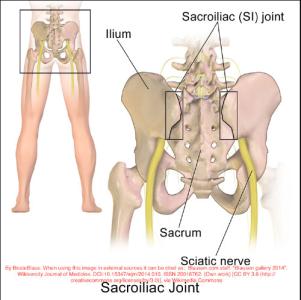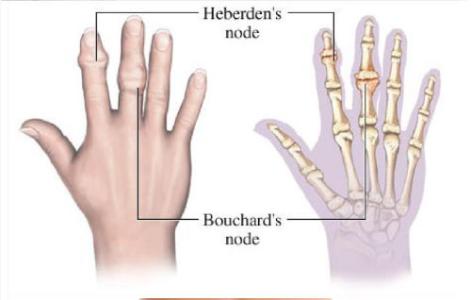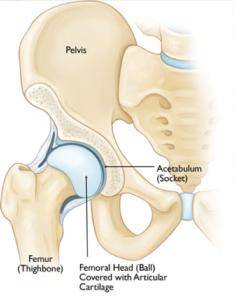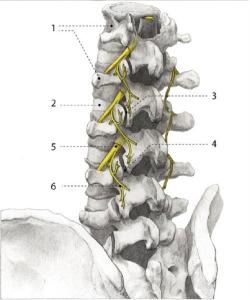The facet joints are the connections between the bones of the spine. The nerve roots pass behind these joints to go from the spinal cord to the arms, legs and other parts of the body.
These joints are the joints that allows the spines to bend and twist, and they keep the back from slipping too far forward or twisting without limits.
Like any other joint, they have cartilage to allow smooth movement where two bones meet and are lined with the synovium and have lubricating joint fluid.
When these joints get swollen and painful because of injury or arthritis, it causes pain.
If the affected joint is in the neck, it may cause headaches and difficulty moving the head. If it is in the back, it may cause pain in the lower back, buttocks or thighs.
Facet Joints Syndrome Facts
- Facet syndrome is one of the most common causes of Spinal Pain and can occur anywhere in the spine. It is considered the 2nd cause of mechanical Low Back Pain and is the number one cause of mechanical Neck Pain.
- Due to various causes these joints can become inflamed and irritated either slowly (e.g. due to excessive weight) or suddenly, like after a car accident “whiplash” or diagnosed as a strain after any type of lifting injury.
- The joints in your spine become irritated and inflamed resulting in Tenderness, Swelling, Stiffness, and Arthritis Pain.
- Very commonly, it is associated with overlapping muscle pain (Myofascial Pain), because your back muscles will get stiffer initially as a protective reaction to decrease any activities that could potentially aggravate the joints movement pain. After some time, if the deeper joints injury does not improve and/or is not treated appropriately soon, the muscle spasms can serve to contribute to your overall pain.
- If you’re experiencing persistent, chronic pain in any part of your spine, from your neck to your lower back, you may be suffering from facet syndrome.
Only through accurate diagnosis and proven treatment methods, our pain management specialist can help relieve your pain without surgery, enabling you to return to a healthy, active lifestyle.
How & Why Does Facet Syndrome Develop?
As explained before, the Facet joints are in constant motion, providing the spine with both the stability and flexibility needed to walk, run, bend, sit, and twist. The joint surfaces are lined with cartilage allowing them to glide easily over each other. Part of the aging process, the cartilage gradually wears away, and in many cases, growths called “bone spurs” can develop. Friction between the bones leads to the tenderness, swelling, stiffness, and pain of arthritis. Though generally the result of the natural aging process, the initial cause of arthritis, or facet syndrome, may be an injury or overuse in youth.
When a joint is damaged through normal deterioration, injury, or repetitive trauma, it may become swollen, painful, and stiff. Inflammation is usually temporary, but in arthritic joints, it may cause long-lasting or permanent disability. In addition to age, other risk factors for facet syndrome include:
- Excessive weight
- Overuse due to sports or heavy labor

- Family history of facet syndrome
- Presence of disease such as gout, other types of arthritis, or infections
- Damage may stem from injuries, including whiplash, sleeping with a twisted neck
- Or also a sudden jerk of the neck, twisting while lifting overhead, or trauma to the spine
Symptoms
- Pain that is often worse in the beginning and end of the day or with a change in weather
- Lower back pain that radiates into the buttocks, pelvic area, or thighs
- Neck pain that radiates into the shoulders, arms, or head
- Headaches at the base of the skull, aching behind the eyes, and/or ringing in the ears
- The sound of bone rubbing on bone when you move
- Abnormal curvature in the spine
- Weakness or numbness in your legs or arms
- Standing has some effect on facet joint pain
- Sitting or riding in the car for long periods of time can also significantly exacerbate the condition
Diagnosis
Despite the fact that this condition is very common, it is likely the most underdiagnosed condition causing mechanical spinal pain. Often times, surgery is recommended to fix another underlying condition, such as a disc problem, but in reality the inflammation of the joints is a significant component to your pain. In fact, fusing the spine with hardware to fix a disc problem can actually make this condition worse. Seeing an experienced Interventional Pain Management specialist to determine if this is a significant component to your pain is key to not missing this diagnosis. This specific condition typically is not cured by surgery but significant pain relief can still be obtained with appropriate interventional therapies.
Accurately determining the correct source of your pain is not only critical to successful treatment but also decreasing the likelihood of this becoming a lifelong problem.
- Begins with a thorough Clinical Evaluation
- Testing may include X-Rays, MRI and/or CT scans, and electro-diagnosis (EMG)
Possible Treatments
- Facet Joint Injections
- Medial Branch Blocks
- Radiofrequency Neurotomy
By BruceBlaus. When using this image in external sources it can be cited as: Blausen.com staff. "Blausen gallery 2014". Wikiversity Journal of Medicine. DOI:10.15347/wjm/2014.010. ISSN 20018762. (Own work) [CC BY 3.0 (http://creativecommons.org/licenses/by/3.0)], via Wikimedia Commons
"Facet Joints" by BruceBlaus. When using this image in external sources it can be cited as:Blausen.com staff. "Blausen gallery 2014". Wikiversity Journal of Medicine. DOI:10.15347/wjm/2014.010. ISSN 20018762. - Own work. Licensed under CC BY 3.0 via Commons -



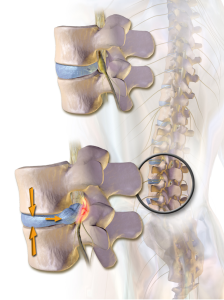
![By James Heilman, MD (Own work) [CC BY-SA 3.0 (http://creativecommons.org/licenses/by-sa/3.0) or GFDL (http://www.gnu.org/copyleft/fdl.html)], via Wikimedia Commons](/assets/components/phpthumbof/cache/vcfrac3.25c355a85cb0101f004729be8d39bec3174.jpg)
